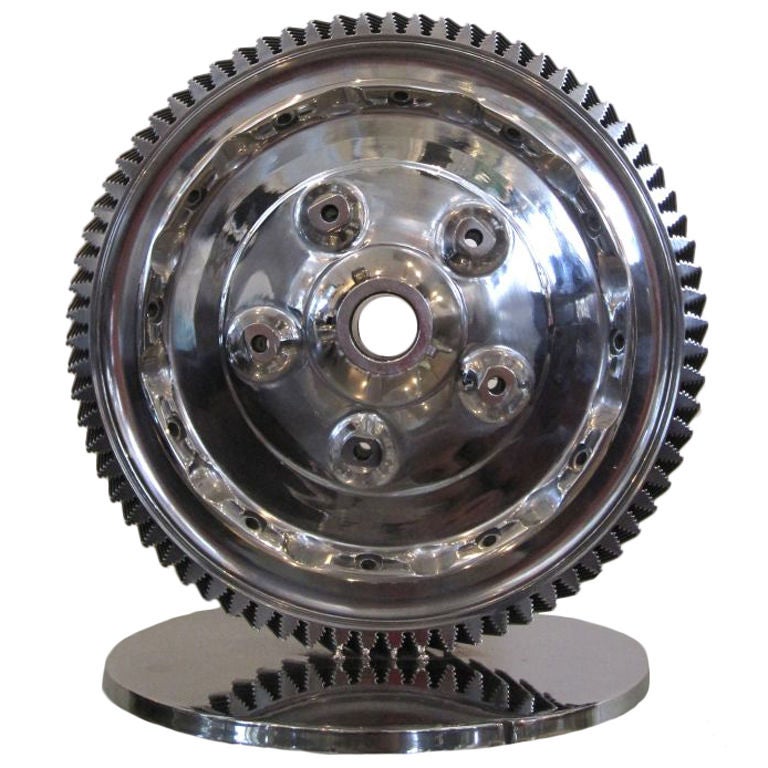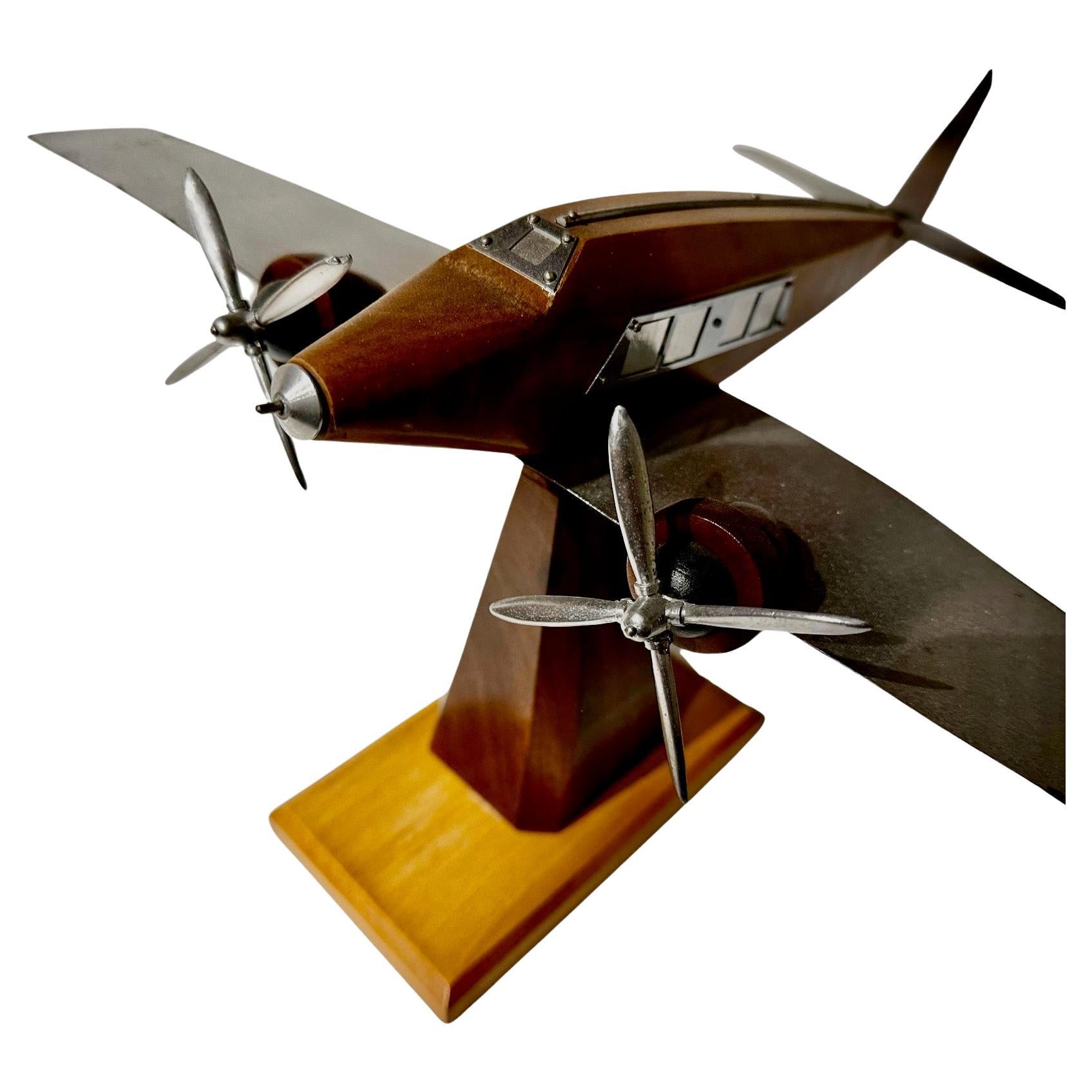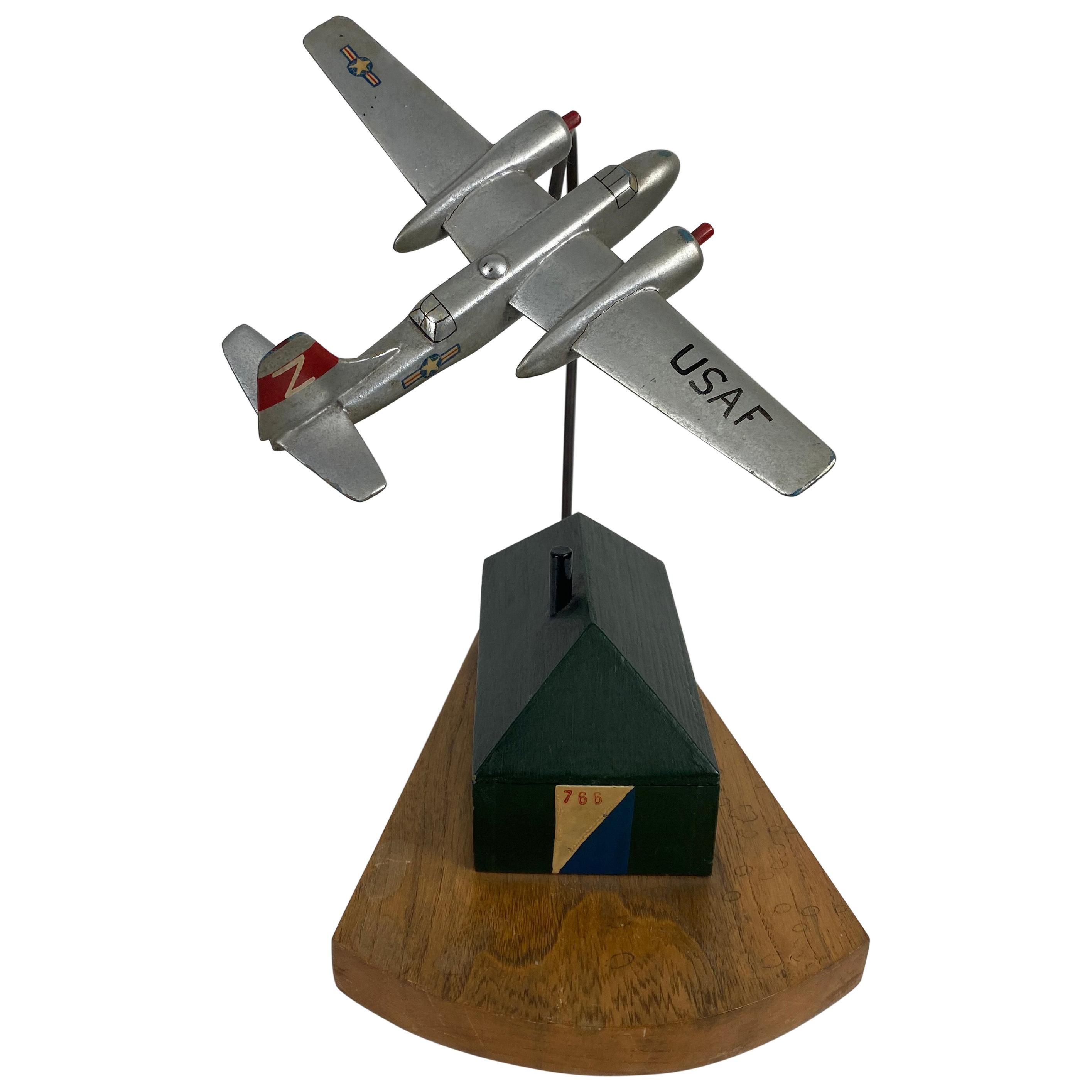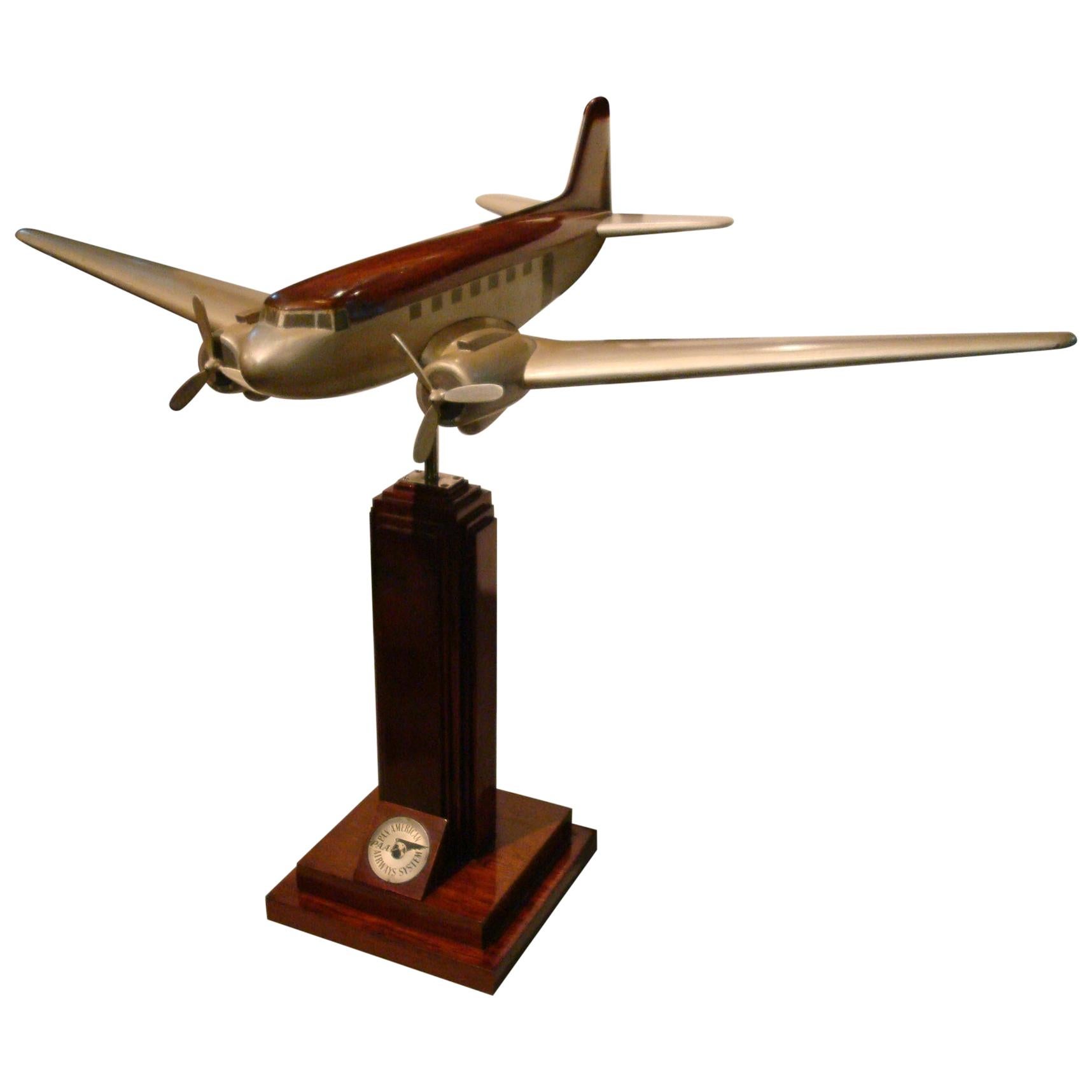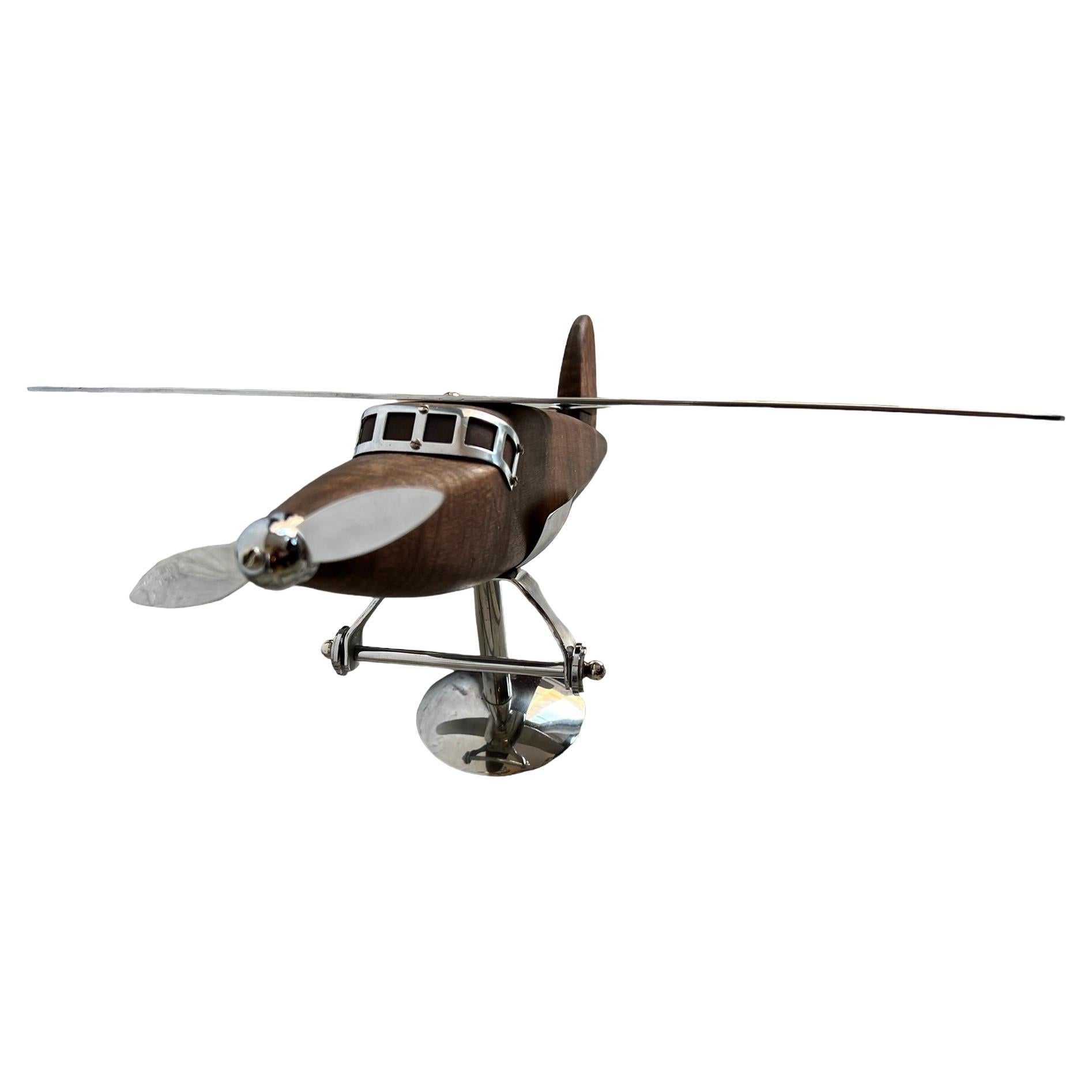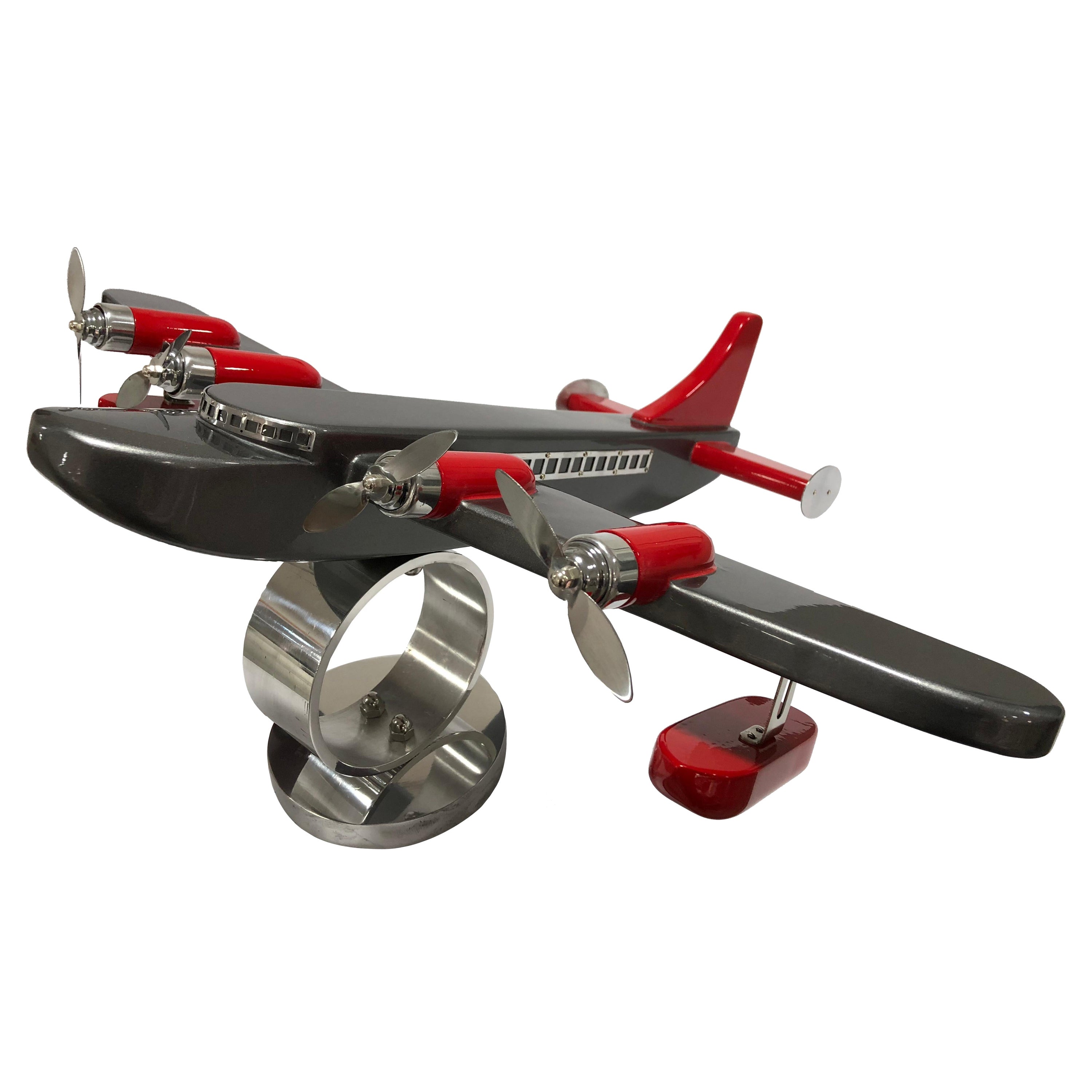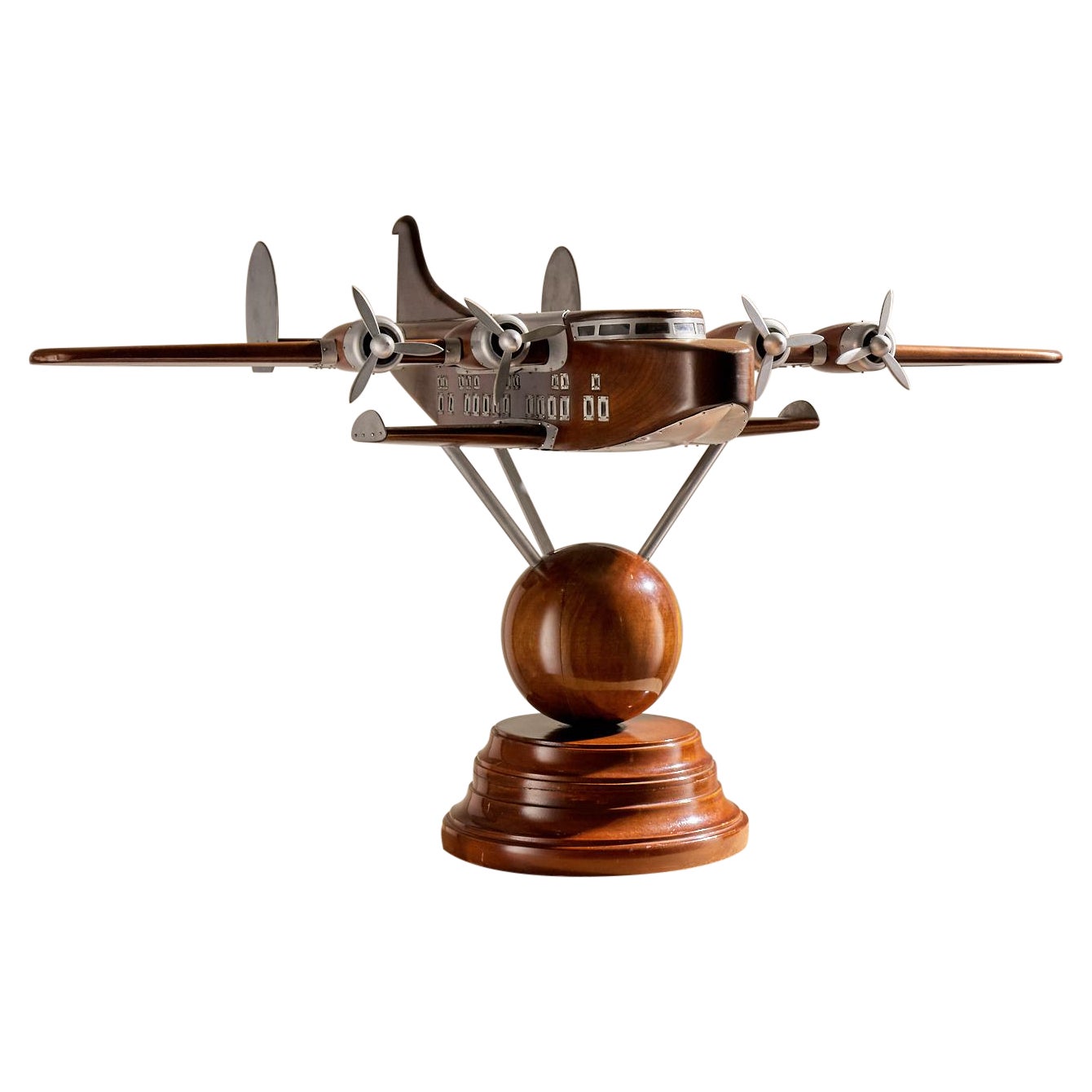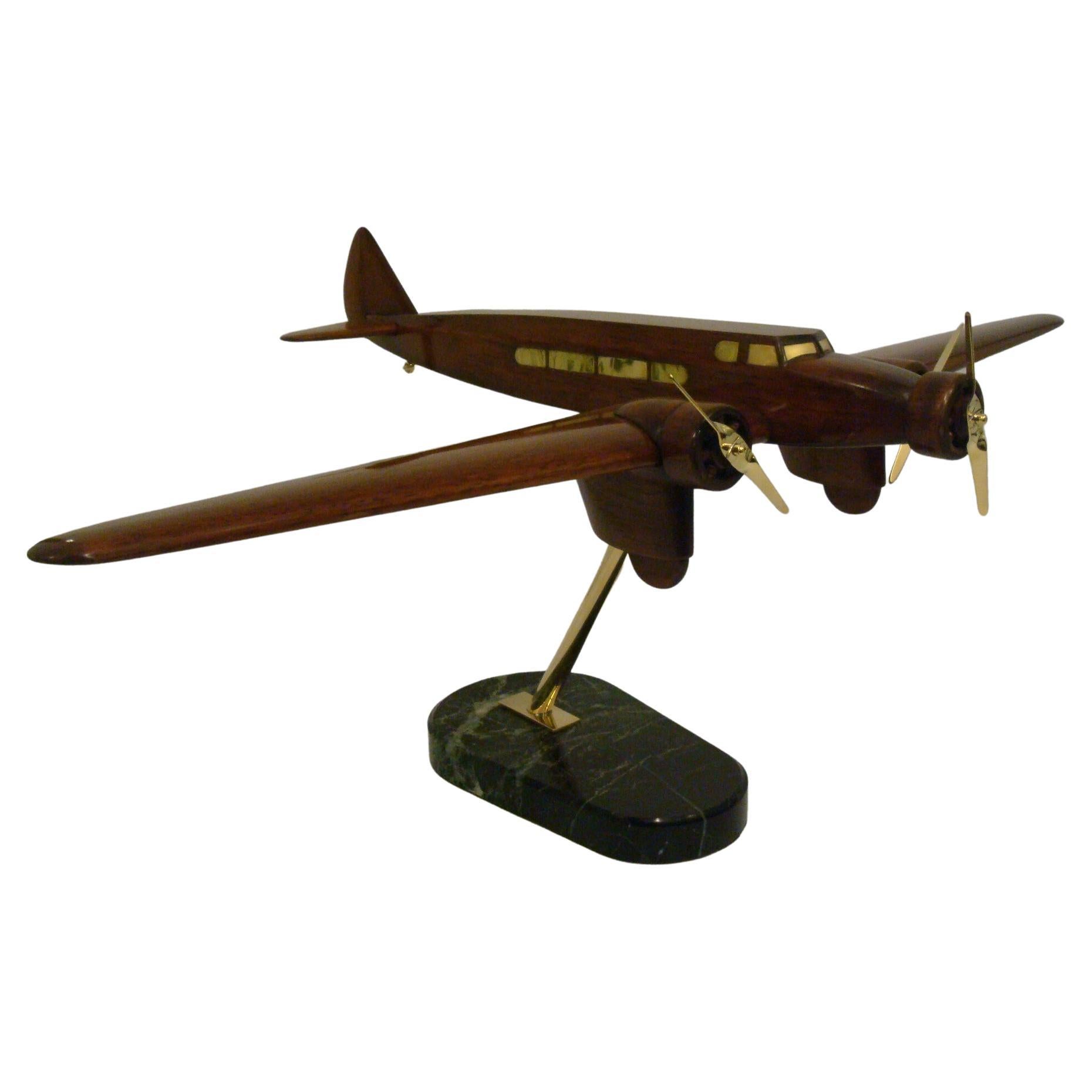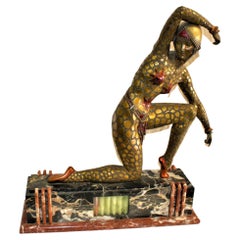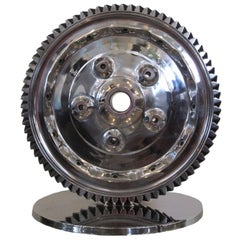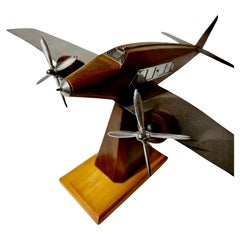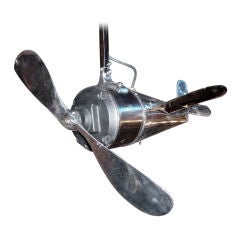
Art Deco Airplane Ceiling Fan
View Similar Items
1 of 8
Art Deco Airplane Ceiling Fan
About the Item
- Dimensions:Height: 27 in (68.58 cm)Width: 25 in (63.5 cm)Depth: 22 in (55.88 cm)
- Place of Origin:
- Period:
- Date of Manufacture:1930's
- Condition:Fine Working Condition.
- Seller Location:North Hollywood, CA
- Reference Number:1stDibs: U12021381201410
You May Also Like
- Art Deco Fan Dancer After ChiparusBy Demetre ChiparusLocated in Los Angeles, CAThe quality in workmanship in casting is almost perfect. The Marble base is superb. Never seen one this nice. From a private Art Deco Collector. Has been very well kept. This will re...Category
1990s North American Art Deco Figurative Sculptures
MaterialsBronze
- Airplane Art SculptureLocated in Miami, FLStunning Sculpture made from Recycled and Chromed Vintage Airplane Parts.Category
21st Century and Contemporary French Sculptures
$2,000 - French Model Propeller Airplane Wood Metal Art DecoLocated in Oakland, CAFrench Model Propeller Airplane Wood Metal Art Deco. Mixed wood with lots of metalwork. Wings, propeller, tail, and windows. Fashioned after The Dewoitine which was an Art Deco 1930s...Category
Vintage 1930s French Art Deco Figurative Sculptures
MaterialsMetal
- Folk Art, Hand Executed Modernist, Art Deco Airplane /Trinket BoxLocated in Buffalo, NYFolk Art, hand executed modernist, Art deco Airplane sculpture with hand built and painted trinket box.Category
Vintage 1940s American Folk Art Aviation Objects
MaterialsWood
- Art Deco Pan-Am DC3 Wooden Airplane Desk Model, MidcenturyBy Pan American AirwaysLocated in Buenos Aires, OlivosArt Deco / midcentury large DC3 desk aviation model. Pan-Am wooden airplane model. It was in an office of the company in South America. Very good restored conditions. Slight age wear. History Pan American Airways began the first transatlantic passenger service on this day in 1939. Pan American World Airways, as it was to be known, commonly known as Pan Am, was the principal United States international air carrier from the late 1920s until its collapse on December 4, 1991. Founded in 1927 as a scheduled air mail and passenger service operating between Key West, Florida, and Havana, Cuba, the airline became a major company credited with many innovations that shaped the international airline industry, including the widespread use of jet aircraft, jumbo jets, and computerized reservation systems. The history of Pan American Airways is inextricably linked to the expansive vision and singular effort of one man – Juan Trippe. An avid flying enthusiast and pilot, Trippe, only 28 years old when he founded the airline, lined up wealthy investors and powerful government officials from his personal acquaintances in the high-society of the 1920s. However, Pan Am’s first flight was an inauspicious start to its epic saga. In 1927, facing a Post Office deadline for the commencement of mail carriage, Pan Am had no working equipment for its sole airmail contract between Key West and Havana. Fortunately for Pan Am, a pilot with his Fairchild seaplane arrived at Key West and was willing to carry the mail to Cuba for the start up operation. It is fitting that Pan Am’s first flight would be over water, since the airline would Pioneer overseas routes throughout its history. Pan Am’s fortunes took a turn for the better in the fall of 1927. Through the heavy lobbying efforts of Juan Trippe, Pan Am was selected by the United States government to be its “chosen instrument” for overseas operations. Pan Am would enjoy a near monopoly on international routes. Added to Pan Am’s Cuba route were lines serving Mexico, Central America, the Dominican Republic, Haiti and Puerto Rico. Most of these destinations were port cities, which could be reached only by landing on water. Therefore Pan Am made good use of its “flying boats,” the Sikorsky S-38 and S-40. Flights were eventually expanded to serve much of South America as well. EnlargePan Am’s fleet of Clippers allowed the airline to conquer the Pacific in the mid-1930s. The flying boats would later be put to military use in WWII. Just a few years later, Pan Am launched its effort to cross the world’s largest oceans. Survey flights across the Pacific were conducted with the Sikorsky S-42 in 1935, but passenger service required bigger and better aircraft. Accompanied by much fanfare, the Martin M-130 was introduced in 1936, followed by the Boeing 314...Category
Mid-20th Century Unknown Mid-Century Modern Aviation Objects
MaterialsWood
$5,260 Sale Price38% Off - Art Deco French Caudron, Renault Desk Airplane Model, Late 1930´sLocated in Buenos Aires, OlivosFrench Caudron - Renault Desk Airplane Model. Late 1930´s. Made of Lacquered Wood and Polished Aluminium The C.710 were a series of light fighter aircraft developed by Caudron-Re...Category
Mid-20th Century French Art Deco Aviation Objects
MaterialsAluminum
$2,500 Sale Price34% Off
Recently Viewed
View AllMore Ways To Browse
Used Ceiling Fan
Vintage Barber Pole
Barber Shop Vintage
Used Ceiling Fans
Vintage Ceiling Fans
Vintage Barber Shop Furniture
Vintage Barber Shop Art
Airplane Fan
Used Barber Shop Pole
Airplane Propellor
1930s Ceiling Fan
Barber Shop Pole
T S Barber
Industrial Ceiling Fan
Hall Vase
Blue Vintage Furniture
Entry Vase
Entry Vases

